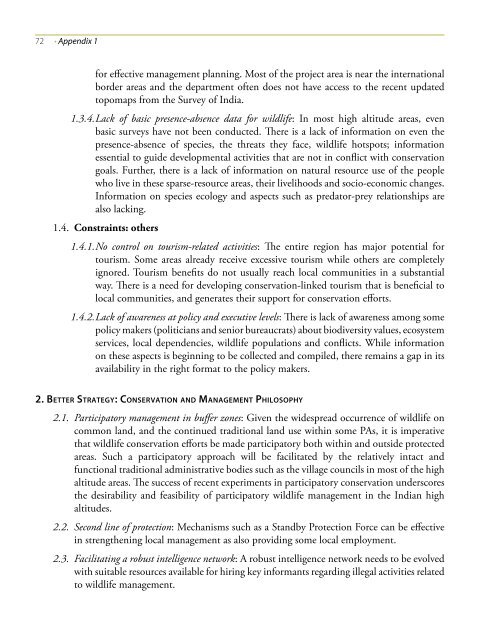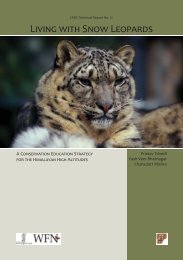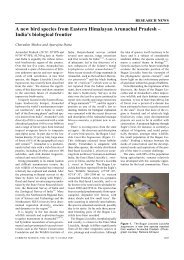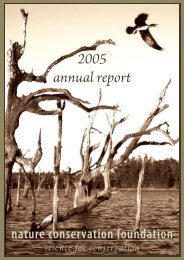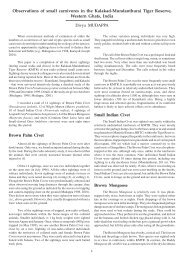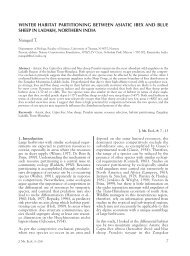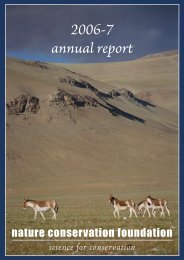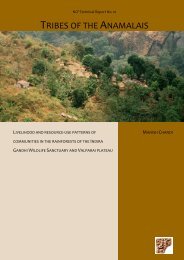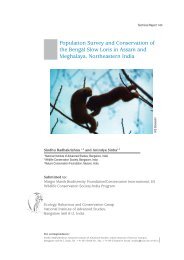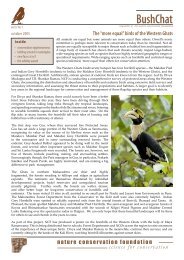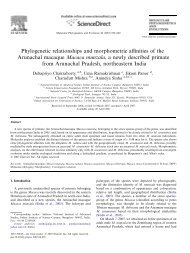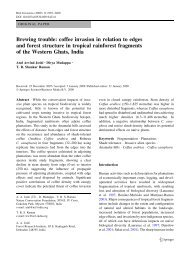towards project snow leopard - Nature Conservation Foundation
towards project snow leopard - Nature Conservation Foundation
towards project snow leopard - Nature Conservation Foundation
You also want an ePaper? Increase the reach of your titles
YUMPU automatically turns print PDFs into web optimized ePapers that Google loves.
72 • Appendix 1<br />
for effective management planning. Most of the <strong>project</strong> area is near the international<br />
border areas and the department often does not have access to the recent updated<br />
topomaps from the Survey of India.<br />
1.3.4. Lack of basic presence-absence data for wildlife: In most high altitude areas, even<br />
basic surveys have not been conducted. There is a lack of information on even the<br />
presence-absence of species, the threats they face, wildlife hotspots; information<br />
essential to guide developmental activities that are not in conflict with conservation<br />
goals. Further, there is a lack of information on natural resource use of the people<br />
who live in these sparse-resource areas, their livelihoods and socio-economic changes.<br />
Information on species ecology and aspects such as predator-prey relationships are<br />
also lacking.<br />
1.4. Constraints: others<br />
1.4.1. No control on tourism-related activities: The entire region has major potential for<br />
tourism. Some areas already receive excessive tourism while others are completely<br />
ignored. Tourism benefits do not usually reach local communities in a substantial<br />
way. There is a need for developing conservation-linked tourism that is beneficial to<br />
local communities, and generates their support for conservation efforts.<br />
1.4.2. Lack of awareness at policy and executive levels: There is lack of awareness among some<br />
policy makers (politicians and senior bureaucrats) about biodiversity values, ecosystem<br />
services, local dependencies, wildlife populations and conflicts. While information<br />
on these aspects is beginning to be collected and compiled, there remains a gap in its<br />
availability in the right format to the policy makers.<br />
2. Better Strategy: <strong>Conservation</strong> and Management Philosophy<br />
2.1. Participatory management in buffer zones: Given the widespread occurrence of wildlife on<br />
common land, and the continued traditional land use within some PAs, it is imperative<br />
that wildlife conservation efforts be made participatory both within and outside protected<br />
areas. Such a participatory approach will be facilitated by the relatively intact and<br />
functional traditional administrative bodies such as the village councils in most of the high<br />
altitude areas. The success of recent experiments in participatory conservation underscores<br />
the desirability and feasibility of participatory wildlife management in the Indian high<br />
altitudes.<br />
2.2. Second line of protection: Mechanisms such as a Standby Protection Force can be effective<br />
in strengthening local management as also providing some local employment.<br />
2.3. Facilitating a robust intelligence network: A robust intelligence network needs to be evolved<br />
with suitable resources available for hiring key informants regarding illegal activities related<br />
to wildlife management.


